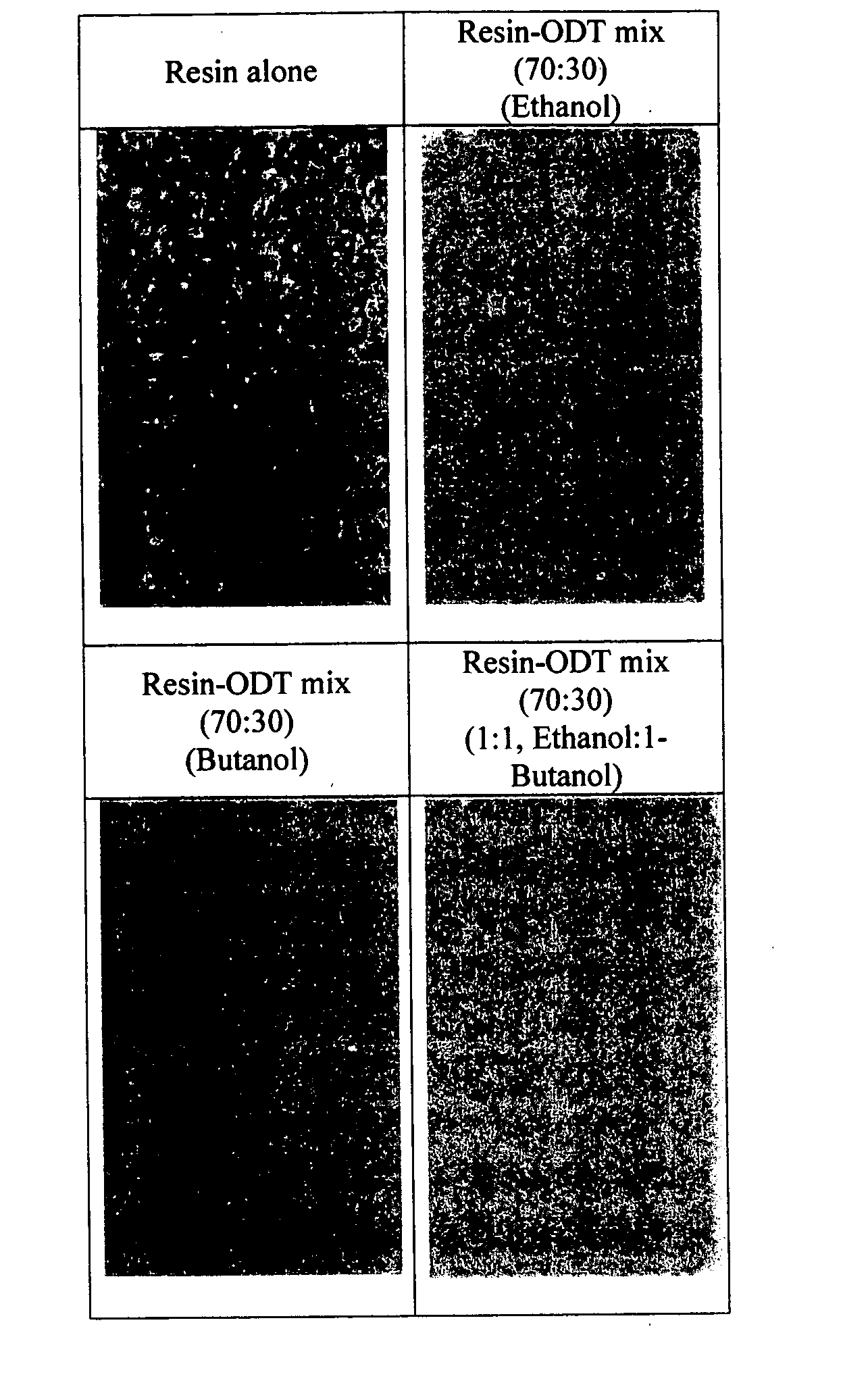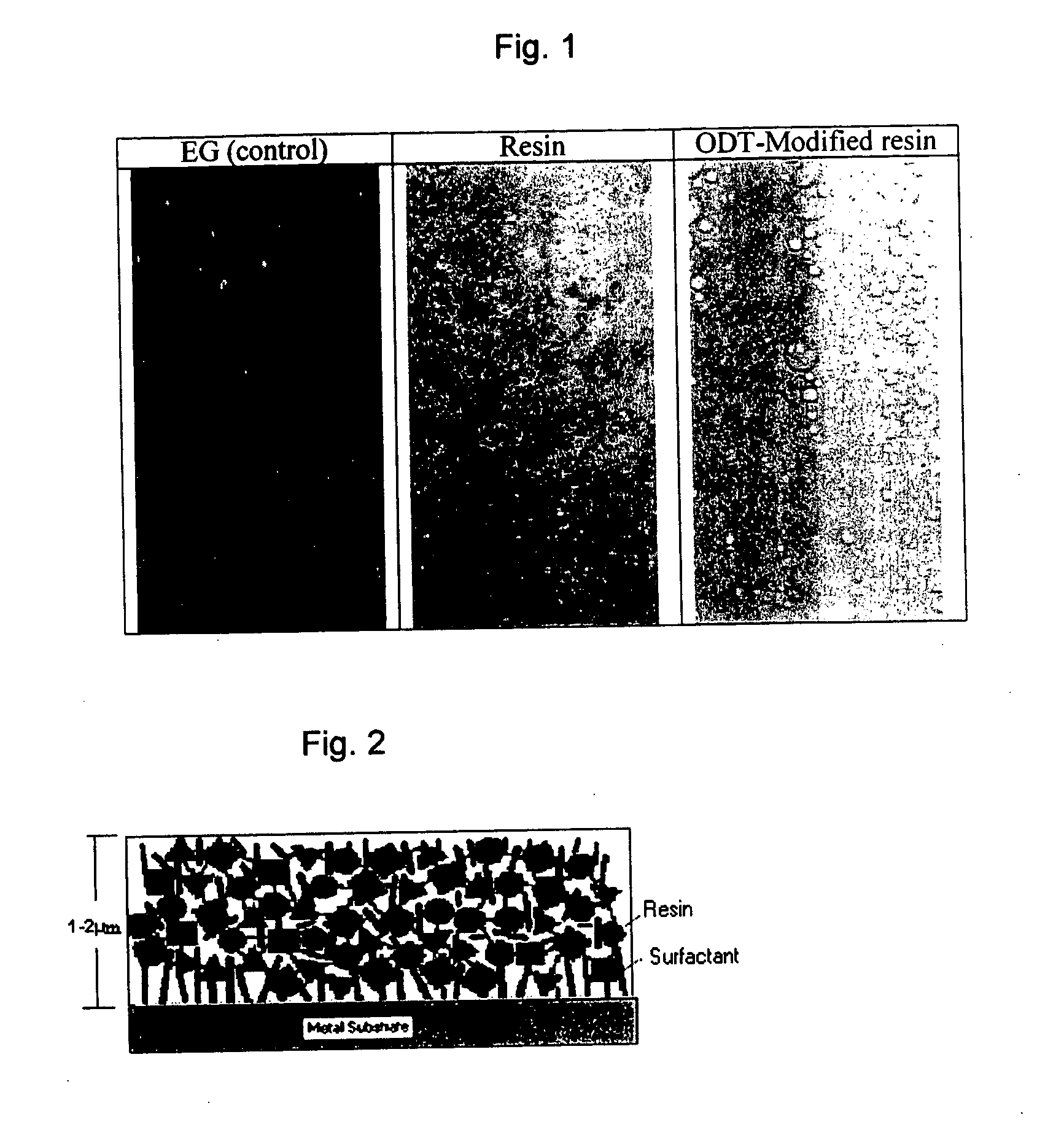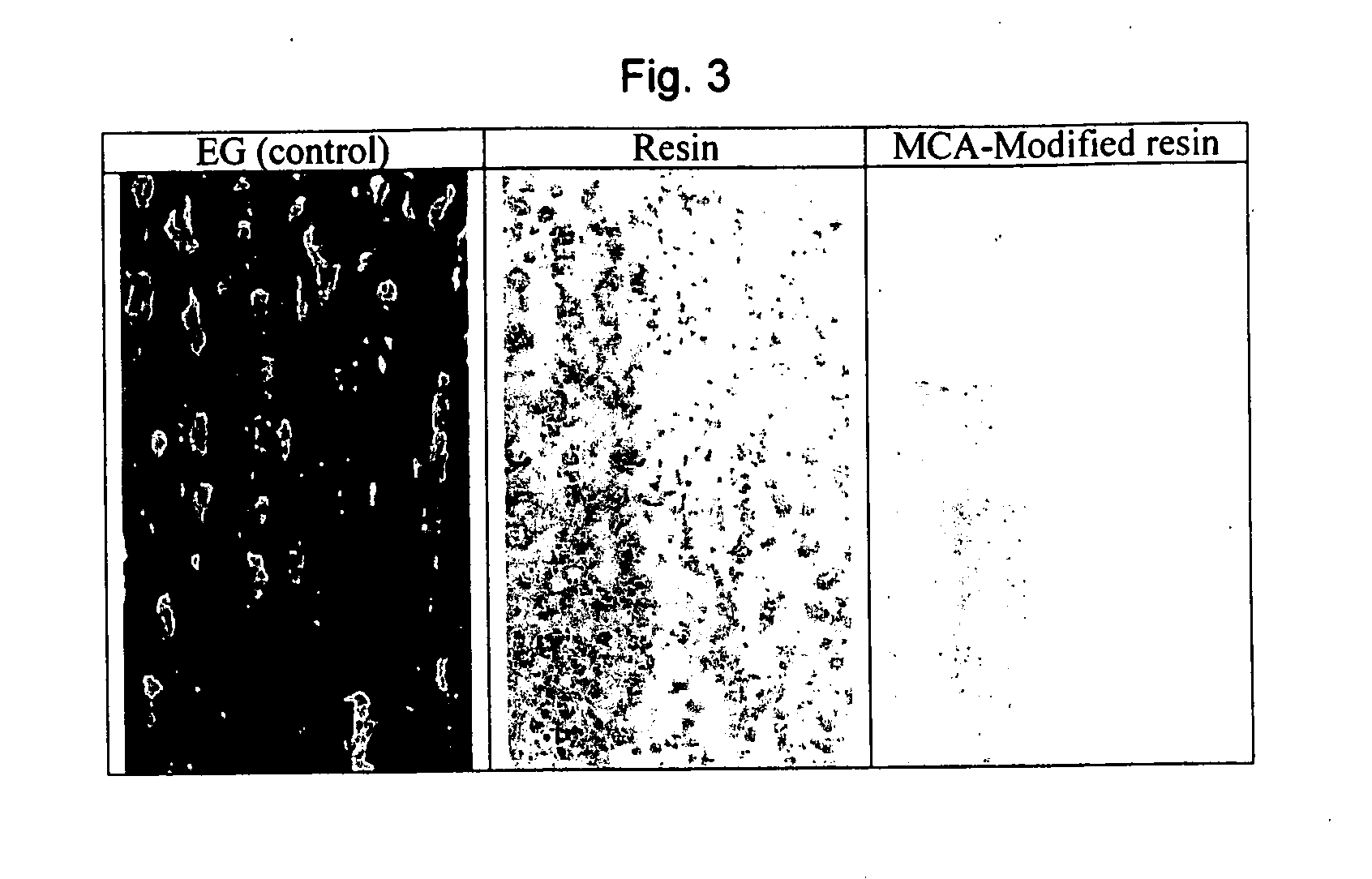Method of improving the performance of organic coatings for corrosion resistance
a technology of organic coatings and corrosion resistance, applied in the field of polymer resins, can solve the problems of weak bonding between the paint and the steel substrate, and achieve the effect of eliminating the chromation step and simplifying the process
- Summary
- Abstract
- Description
- Claims
- Application Information
AI Technical Summary
Benefits of technology
Problems solved by technology
Method used
Image
Examples
example 1
[0034] A 0.1-M ODT solution was prepared in ethanol. The resin solution was prepared by mixing 99 parts of polymer solution and 1 part of inorganic hardener solution, both of which were provided by a chemical company. The ODT solution and resin solution were subsequently mixed together in the ratio of 30:70 by volume. The resultant mixture solution was applied to a test panel of 12×7.5 cm by means of a No. 5 bar coater. The panel was an electrogalvanized (EG) CRS sheet from Pohang Iron and Steel Company (POSCO). The coated panel was then cured in an oven at a temperature of 150° C. for 5 minutes. As a result, a uniform, lightly gray-colored coating was formed on the steel panel with thicknesses in the range of 1-2 μm. For comparison, another EG steel panel was coated with the aforesaid resin solution without ODT. The test panels coated with the resins with and without ODT were subjected to salt spray test (SST) by following the test procedures of ASMT B117. Also subjected to SST was...
example 2
[0036] This example illustrates the optimization of the concentration of ODT as a modifier in the resin. The coatings of ODT-modified resins were prepared in the same manner as described in Example 1, but the mixing ratio between resin solution and ODT solution (0.1M in ethanol) was varied in the range of 90:10 to 40:60 by volume.
[0037] The EG steel panels coated with the ODT-modified resins were subjected to salt spray tests.
[0038] For comparison, two other EG steel panels were also subjected to salt spray tests. One was without any treatment, and the other was coated with the unmodified resin. Still another panel was treated with chromate rinsing prior to coating it with the unmodified resin.
[0039] The results of the salt spray tests are given in Table 1. As shown, even a small amount of ODT added to the resin increased corrosion resistance considerably. As the ODT dosage was increased, the corrosion resistance was further increased. At very high dosages of ODT, the resistance ...
example 3
[0042] In this example, a 16-mercaptohexadecenoic acid (MCA, HS(CH2)15COOH) was used instead of ODT as a resin modifier. This reagent was different from ODT in that it was a bi-functional sulfur-containing compound. A 0.025 M MCA solution was prepared with ethanol and then mixed with the resin solution at a ratio of 1:1 by volume, which was not necessarily the optimal mixing ratio. At this ratio, the resin-organosulfur mixture contained 0.0125 M MCA. The modified resin was used to coat an EG steel panel with a No. 5 bar coater. The coated panel was cured at 150° C. for 5 minutes. Under this condition, the coating thickness would be approximately 1-2 μm. The EG steel panel coated with the modified resin was subjected to salt spray test. For comparison, salt spray tests were also conducted on an uncoated EG steel panel and an EG steel panel that had been coated with the unmodified resin.
[0043] After 144 hours of salt spray tests, the untreated EG steel panel showed red rusts, while t...
PUM
| Property | Measurement | Unit |
|---|---|---|
| temperature | aaaaa | aaaaa |
| thickness | aaaaa | aaaaa |
| temperature | aaaaa | aaaaa |
Abstract
Description
Claims
Application Information
 Login to View More
Login to View More - R&D
- Intellectual Property
- Life Sciences
- Materials
- Tech Scout
- Unparalleled Data Quality
- Higher Quality Content
- 60% Fewer Hallucinations
Browse by: Latest US Patents, China's latest patents, Technical Efficacy Thesaurus, Application Domain, Technology Topic, Popular Technical Reports.
© 2025 PatSnap. All rights reserved.Legal|Privacy policy|Modern Slavery Act Transparency Statement|Sitemap|About US| Contact US: help@patsnap.com



